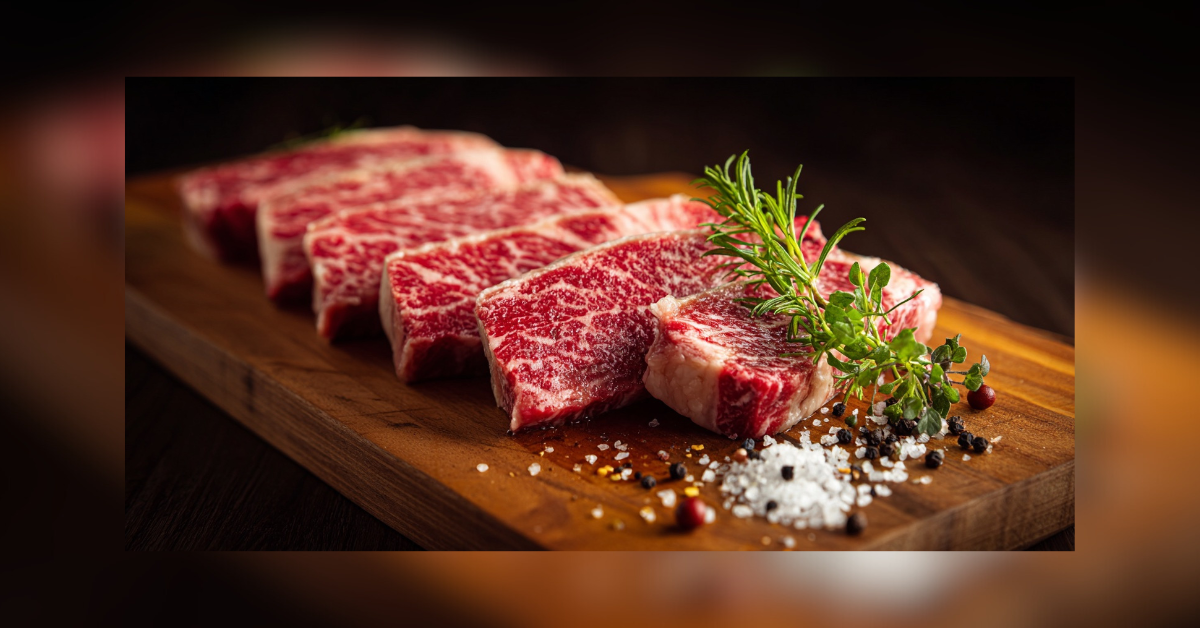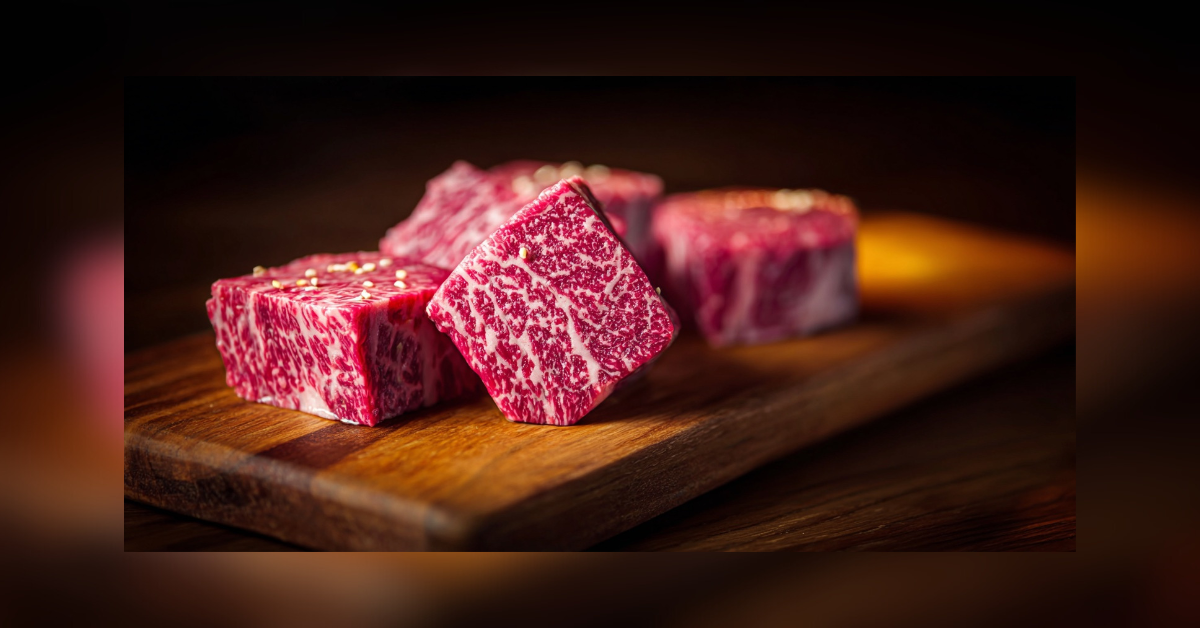 NEWS
NEWSWhat Makes Japanese Wagyu So Special Around the World?

June 27 2025, Published 12:31 a.m. ET
Japanese Wagyu is revered across continents not only for its unmatched taste but also for its rich heritage, grounded in centuries of precise breeding and regional husbandry. The term "Wagyu" literally means "Japanese cow," but the phrase refers to more than just geography. It signifies a select group of native breeds that have been cultivated with an eye toward marbling, tenderness, and overall quality. Cattle such as the Kuroge Washu (Japanese Black) form the cornerstone of this legacy, representing an ongoing commitment to genetic purity.
Over generations, Japanese farmers have honed an intricate understanding of bovine bloodlines, selectively breeding animals with superior genetic markers. This process has remained largely unchanged, resisting modern shortcuts in favor of maintaining the strict discipline that defines the Wagyu identity. In a market where quantity often overshadows quality, the Japanese approach stands as a notable counterpoint, emphasizing rarity and refinement. The precise control over genetics ensures consistency in intramuscular fat distribution, which is the hallmark of Wagyu’s luxurious mouthfeel.
The legacy extends beyond breeding to encompass animal welfare, regional customs, and legal protections. Japan’s Ministry of Agriculture rigorously oversees Wagyu certification, maintaining registries and enforcing standards that limit what can be legally marketed as Wagyu. This level of national oversight has helped protect Wagyu’s integrity on the global stage. These regulations prevent dilution of the brand and preserve a product that has become synonymous with indulgence, precision, and prestige.

A Culinary Texture Unlike Any Other Beef
The most striking attribute of Japanese Wagyu is its exceptional marbling, an intricate lacework of intramuscular fat that produces its signature buttery texture. Unlike typical Western beef, where fat sits in exterior pockets, Wagyu’s fat is evenly woven throughout the muscle, leading to a richer, smoother bite. This marbling results not only in extraordinary tenderness but also in a low melting point that lets the beef almost dissolve on the tongue.
That texture transforms the cooking process itself. Because Wagyu contains such fine, low-temperature fat, it requires a gentle hand. Chefs often prepare it with minimal seasoning and careful searing, allowing the beef’s inherent characteristics to shine. Even in Japan, Wagyu is seldom grilled like a standard steak. Instead, it may be thinly sliced for sukiyaki or lightly seared for tataki, each technique designed to showcase its unique texture and flavor density without overcomplication.
This tactile experience has captured the imagination of culinary professionals worldwide, prompting a surge in Wagyu-forward menus from Tokyo to New York. As interest continues to grow, platforms like Destination Wagyu have made it easier for American consumers to explore authentic offerings that were once available only in Japan. Through curated Japanese A5 beef selections, the company provides access to acclaimed cuts such as Rib Cap Steak, prized for its exquisite marbling and intense flavor; Kobe Wine Filet Steak, noted for its subtle depth and tenderness; and the award-winning Miyazaki Ribeye Steak, celebrated for its balanced marbling. These examples reflect the regional craftsmanship and careful sourcing that continue to define Japan’s reputation for exceptional beef.
Regional Distinctions and Terroir
What sets Japanese Wagyu further apart from other beef is the deeply rooted concept of terroir, the notion that climate, geography, and feed uniquely influence the animal’s development. Different prefectures in Japan have established their own Wagyu brands—Kobe, Miyazaki, Omi, and Hida, among others—each with regional protocols and characteristics that shape the final product. These differences are not merely about branding; they reflect centuries of agricultural refinement embedded into local economies.
Kobe beef, perhaps the most internationally recognized, originates from the Tajima strain of cattle raised in Hyogo Prefecture. It is celebrated for its balance of marbling and firmness, as well as the strict rules governing its certification. In contrast, Miyazaki Wagyu, hailing from the southern island of Kyushu, often wins top honors at national competitions for its superb consistency and fat quality. Each region tailors feed regimens, exercise routines, and even stress-reduction methods to produce beef with a distinct flavor profile and texture.
This deep connection to the place makes Japanese Wagyu akin to fine wine or specialty coffee. The meticulous tracking of lineage and environmental factors produces a range of expressions across different breeds and regions. As a result, tasting Wagyu from various prefectures is more than a culinary event; it is a journey through the cultural and ecological diversity of Japan itself.
Feeding and Husbandry: A Philosophy of Patience
Japanese Wagyu cattle are not raised like typical livestock. Instead, they are nurtured with deliberate, almost ceremonial care, reflecting a philosophy of patience rather than production speed. Farmers often treat their animals as living investments, watching over them through personalized attention and minimal stress environments. This approach contributes directly to the quality of the beef, both in terms of texture and flavor.
Feed regimens are tailored to encourage fat development at a slow, steady pace. Diets commonly include rice straw, barley, corn, and even beer, depending on the farm and region. While the idea of Wagyu cattle being massaged or serenaded with classical music is often romanticized, there is truth in the attention paid to their stress levels. Animals raised in calm, controlled settings tend to produce meat with finer marbling and better fat integration.
The entire rearing process can last up to three years, nearly twice as long as conventional beef cattle. This slow growth allows for more robust marbling and flavor development, giving Wagyu its signature traits. Rather than focusing on scale, Wagyu farmers commit to excellence in each individual animal, reinforcing the scarcity and high value of the final product.
Want OK! each day? Sign up here!
Grading and Authenticity: Understanding the A5 Label
Among connoisseurs, the A5 rating of Japanese Wagyu has become shorthand for the pinnacle of beef quality. However, this grading system, set by the Japan Meat Grading Association, is anything but simplistic. The "A" denotes the yield grade, indicating the amount of usable meat, while the "5" reflects the highest level of marbling, color, texture, and fat quality. Only a fraction of Wagyu produced in Japan receives this rating.
The evaluation process is rigorous and standardized. Inspectors assess factors such as Beef Marbling Score (BMS), which ranges from 1 to 12, with A5 beef typically scoring between 8 and 12. They also evaluate meat luster, fat brightness, and firmness. The level of scrutiny ensures that the A5 label carries more than just marketing weight—it represents objective excellence in every sensory category.
However, as Wagyu gains international recognition, the market has also seen an increase in imitation and mislabeling. It is not uncommon for foreign producers to adopt the Wagyu name without adhering to Japanese standards. Discerning consumers must look for certification from the Japanese government and credible importers to ensure authenticity. Knowing what the A5 label truly entails helps buyers navigate a complex global market.
Global Demand and Cultural Appeal
Japanese Wagyu's allure has crossed borders, becoming a fixture in elite dining circles from London to Dubai. In part, this is due to the global rise of culinary tourism and an increasing interest in authentic, high-end food experiences. Diners are no longer satisfied with familiar tastes; they seek out ingredients that tell a story, and Wagyu—with its heritage, craftsmanship, and exclusivity—fulfills that craving.
Moreover, Wagyu's appeal has been amplified by social media and the modern fascination with luxury. Videos of sizzling A5 steaks, glistening in high-definition, are shared widely, often accompanied by commentary from food influencers and chefs. This visibility has created a broader consumer base that spans beyond traditional steak lovers to include wellness-minded individuals who are intrigued by Wagyu’s high oleic acid content and perceived health benefits.
Despite this popularity, Japan remains cautious about over-exporting its Wagyu stock. Strict quotas and regulations ensure that the breed’s genetic integrity is preserved. As a result, demand often outstrips supply, which only adds to the beef’s mystique. Limited access, combined with high quality, keeps Wagyu in the realm of culinary aspiration.

The Economics of Rarity and Luxury
The rarity of authentic Japanese Wagyu is not merely a function of limited production; it is also a reflection of the high costs associated with raising, certifying, and exporting the beef. From breeding and feeding to slaughter and grading, every stage involves specialized labor and regulatory oversight. These measures drive up prices but also guarantee a level of quality rarely found in global markets.
In economic terms, Wagyu sits at the intersection of luxury goods and artisanal craftsmanship. Like fine watches or bespoke fashion, it commands a premium not just because of what it is, but because of how it is made. The price per ounce may seem steep to the casual consumer, but for those who understand the intensive process behind each cut, it represents value justified by scarcity and excellence.
Retailers, restaurateurs, and high-end butchers often operate within tight supply chains to source genuine Wagyu. Companies that specialize in premium imports help bridge the gap between Japanese producers and Western consumers, offering transparency and traceability that elevate buyer confidence. In this way, Wagyu becomes more than a product—it becomes an experience, one shaped as much by narrative as by flavor.

